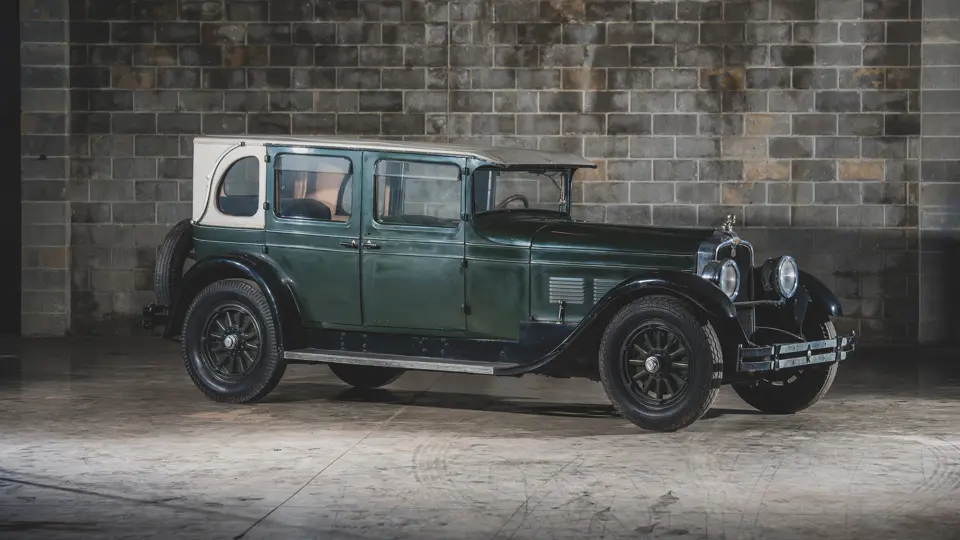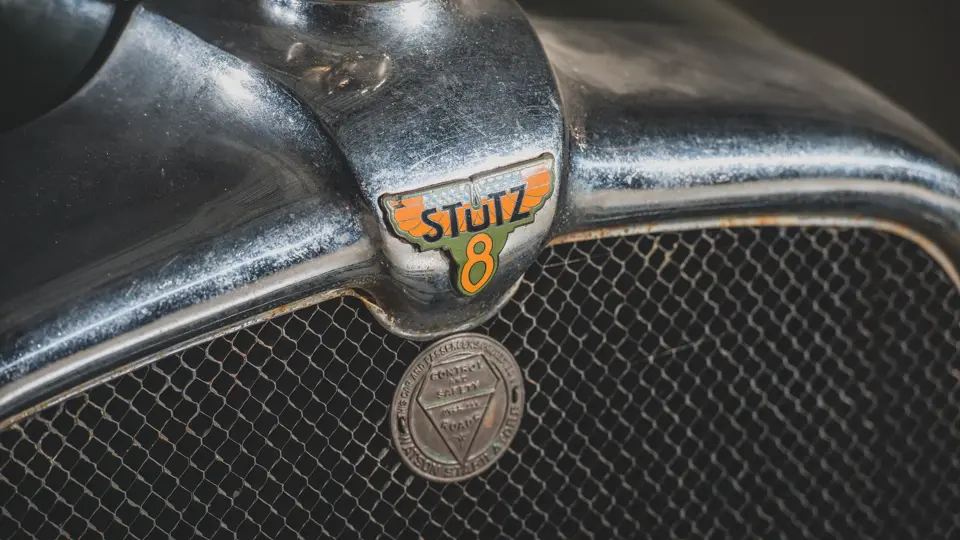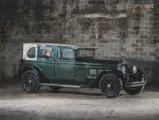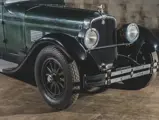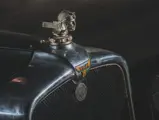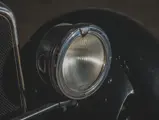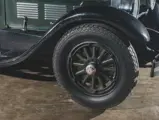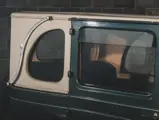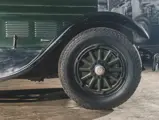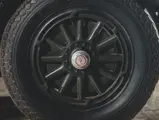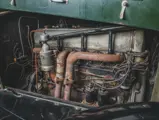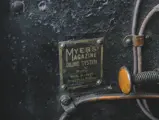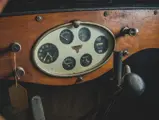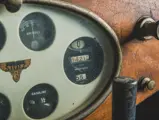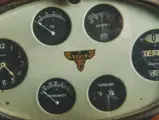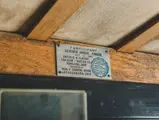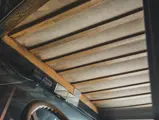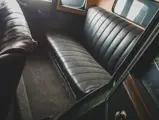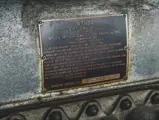
1926 Stutz Model AA Vertical Eight Brougham by Brewster
{{lr.item.text}}
$22,400 USD | Sold
{{bidding.lot.reserveStatusFormatted}}
- The first automobile in the Guyton Collection, acquired in 1970
- One of the earliest surviving examples of the “Safety Stutz”
- Sporty, low-slung, and attractive sedan coachwork
- An ideal basis for restoration; very innovative engineering for the era
- Classic Car Club of America (CCCA) Full Classic
THE SAFETY STUTZ
“The Safety Stutz” of 1926 was the first American production car to be equipped with engineered-in safety features, including a lowered center of gravity, a wire-glass “shatterproof” windshield, narrow windshield pillars for increased visibility, and reinforced running boards that would protect against side-impact collisions. The body sat low on the chassis, because a worm-gear differential made it possible to mount the drive shaft below the rear axle.
Today this is widely considered one of the most innovative automobile designs of the early Classic Era, and the survivors are still fiercely sought after by enthusiasts of the marque.
MR. GUYTON’S FIRST ANTIQUE AUTOMOBILE
Fred F. Guyton began his automobile collecting in 1970 at Classic Cars, Inc. of Mount Zion, Illinois, which was offering this 1926 Model AA Vertical Eight brougham, a design developed for Stutz by Brewster & Company, the famous Long Island coachbuilders. Mr. Guyton acquired it for $400, and it has remained in his Mason’s Garage museum ever since, a remarkable span that has now extended to 50 years.
The car shows evidence of having been repainted over the original color, a pale blue, and a leatherette top covering and black vinyl upholstery installed, probably prior to 1961, when the car was driven by its then-owner in a parade in Hamilton, Ohio. It retains much of its original trim hardware, inside and out, including, significantly, the original wired safety glass windshield. The interior features beautiful woodwork, including the original “skeleton wood” headliner and handsome inlaid door caps. Some deterioration of the body’s structural wood was found upon close inspection, although a restoration specialist may be able to stabilize it. The Stewart-Warner odometer noted 14,213 miles at the time of cataloguing.
Overall the car could be extensively freshened, both cosmetically and mechanically, for use as a CARavan automobile, but is perhaps best suited to a full restoration – something that Fred F. Guyton had long intended, and which would result in a significant Stutz indeed, as one of the earliest surviving examples of one of the Roaring Twenties’ greatest designs.

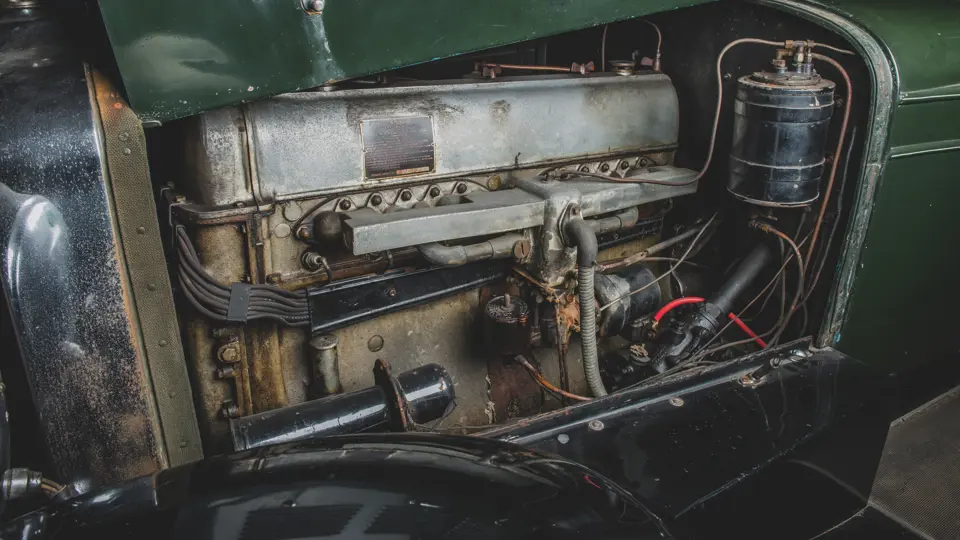


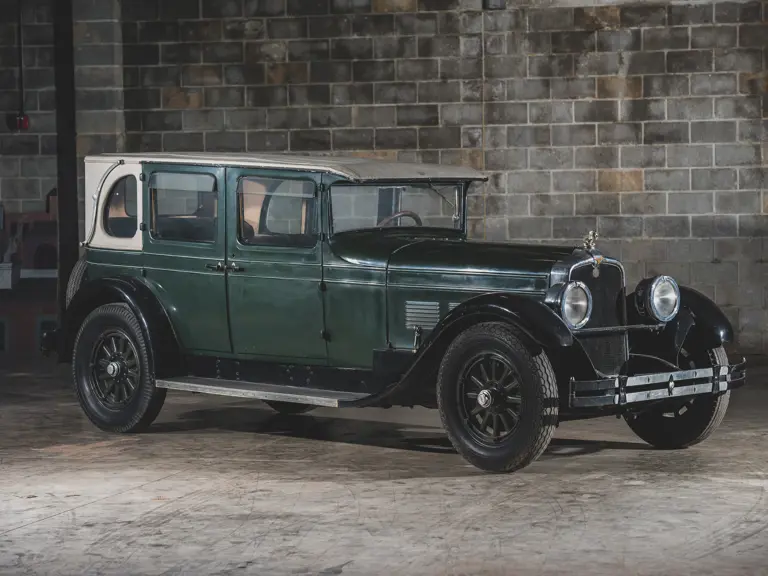
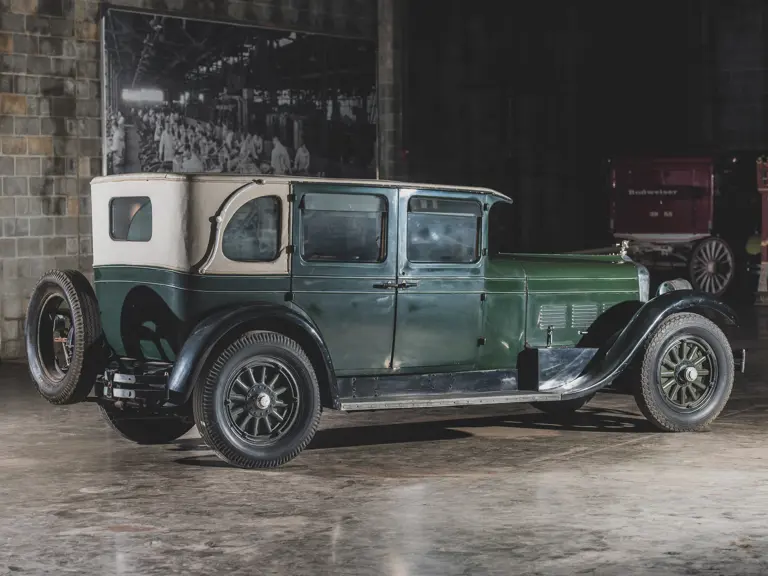
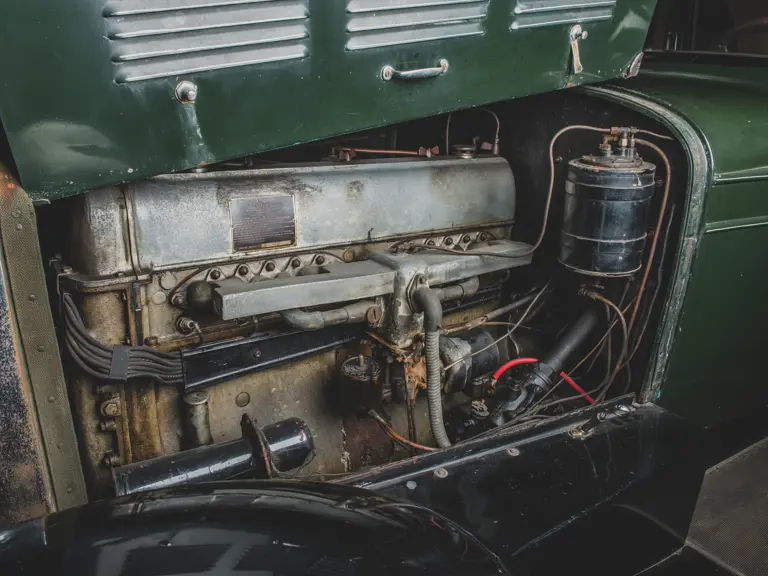
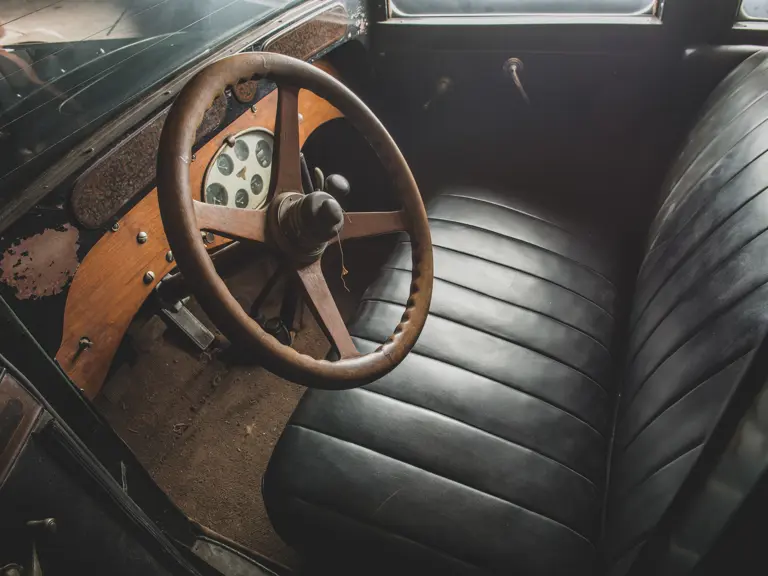
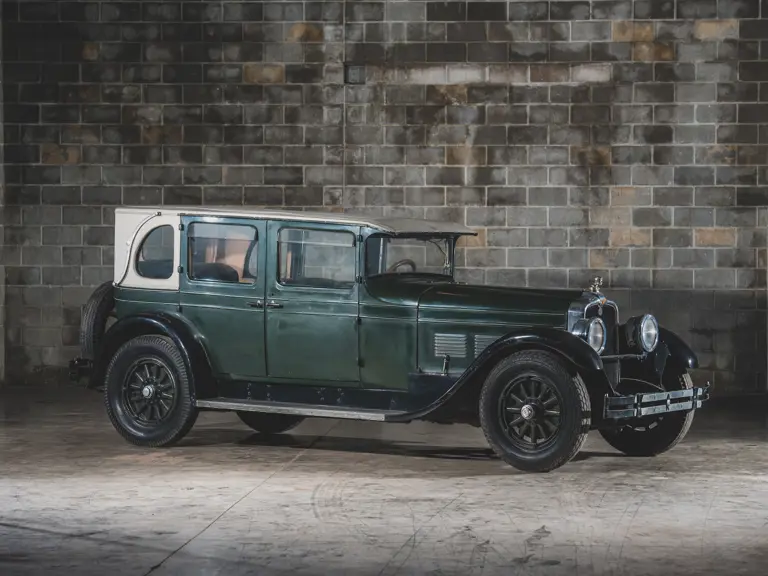
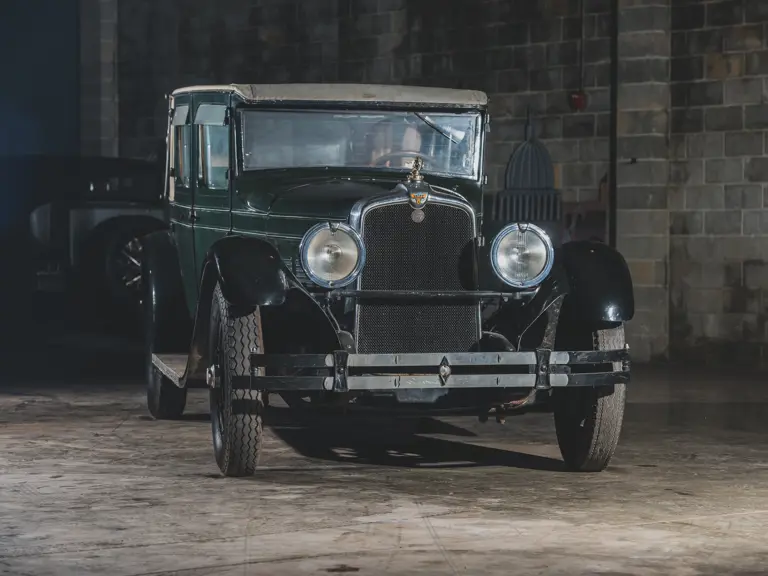
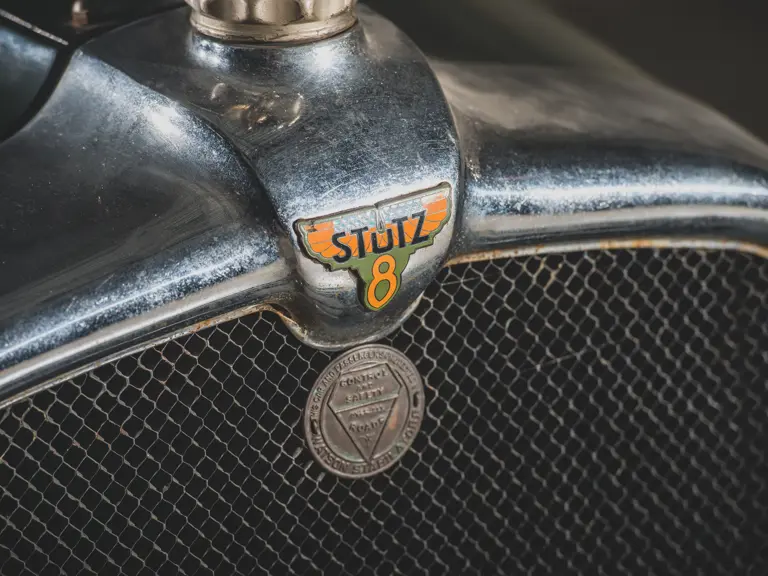
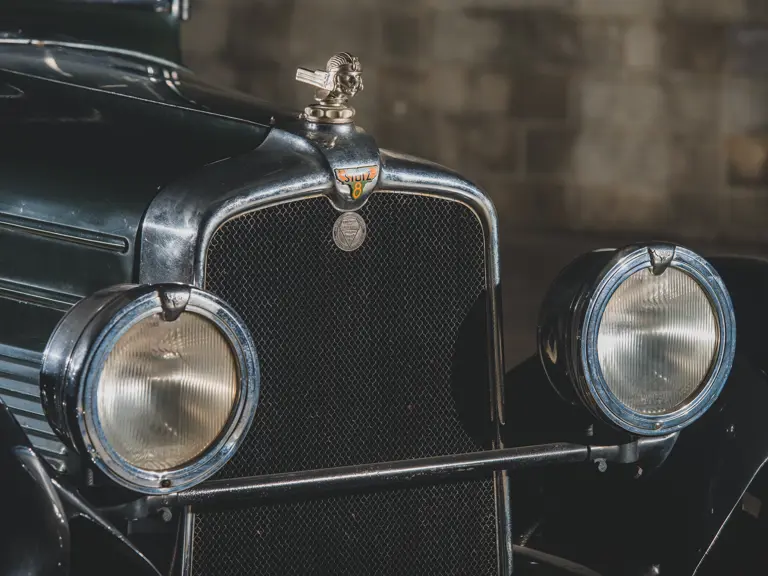
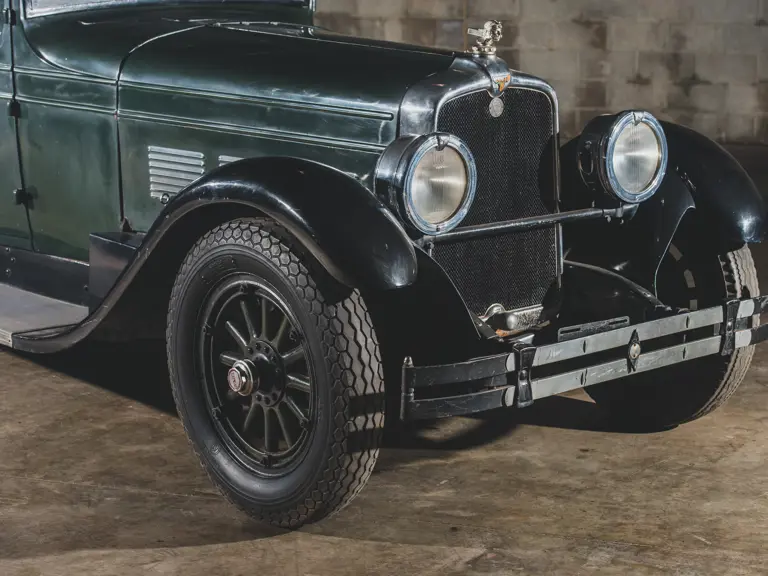
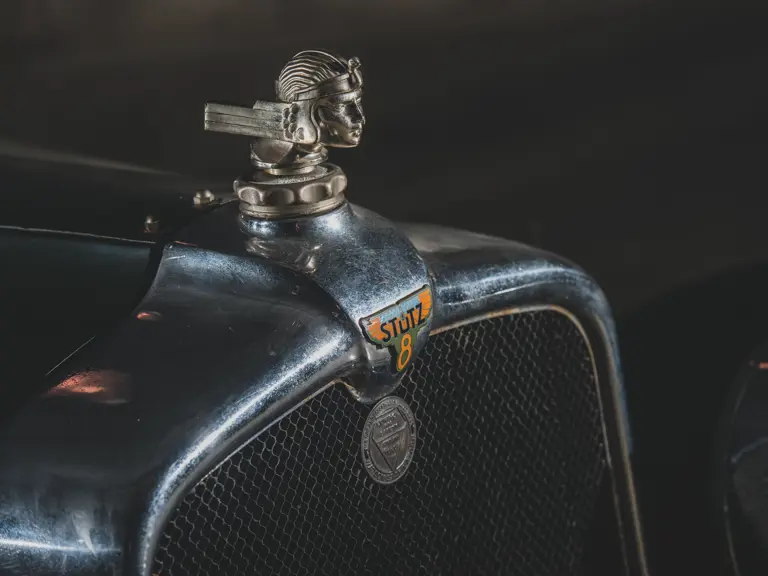
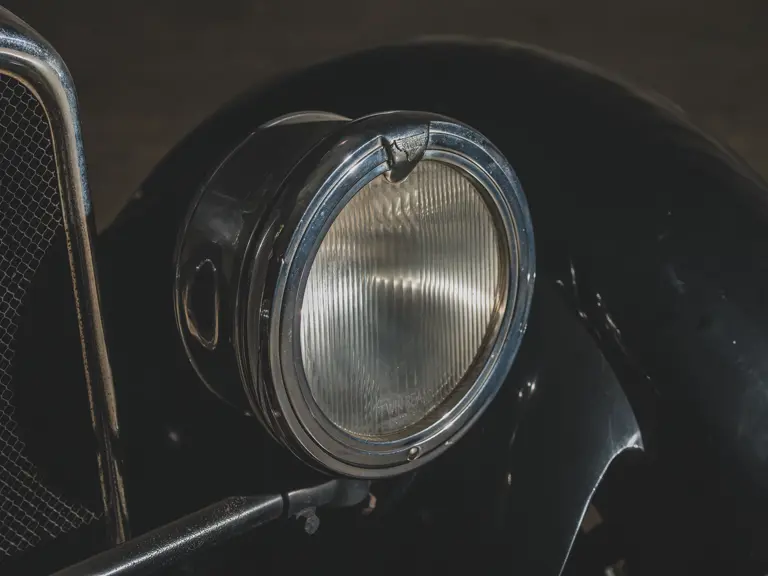
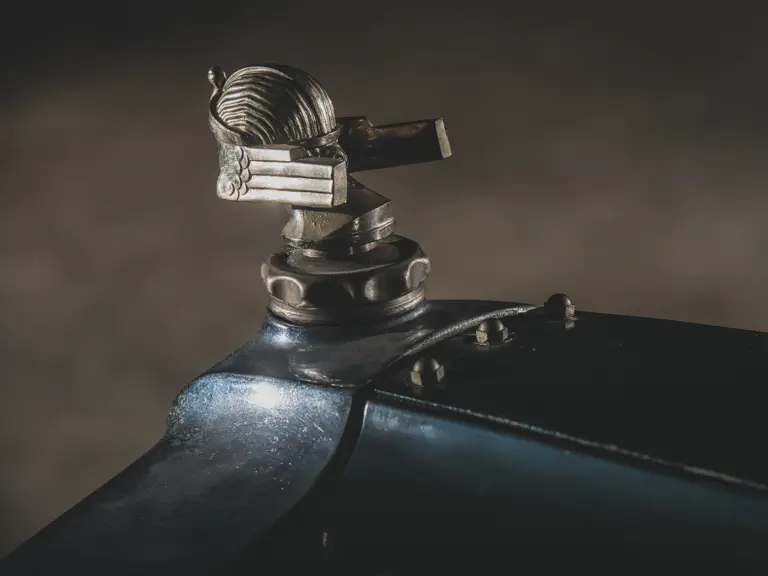
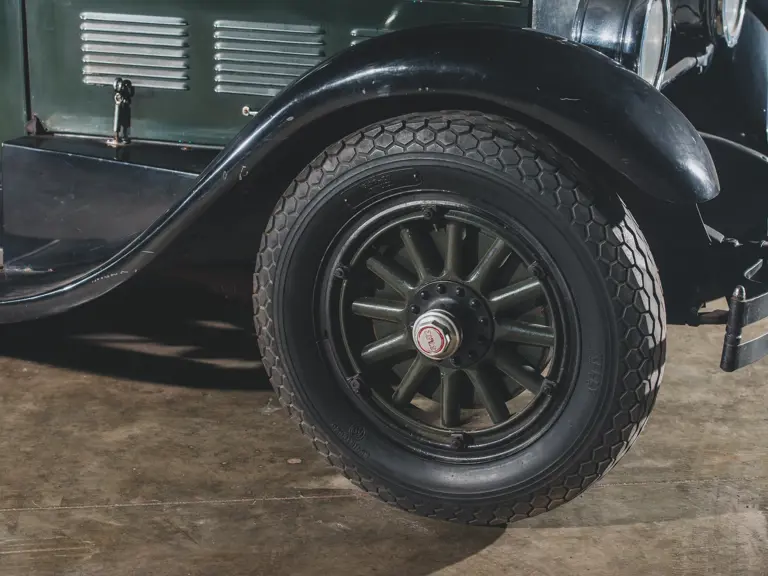
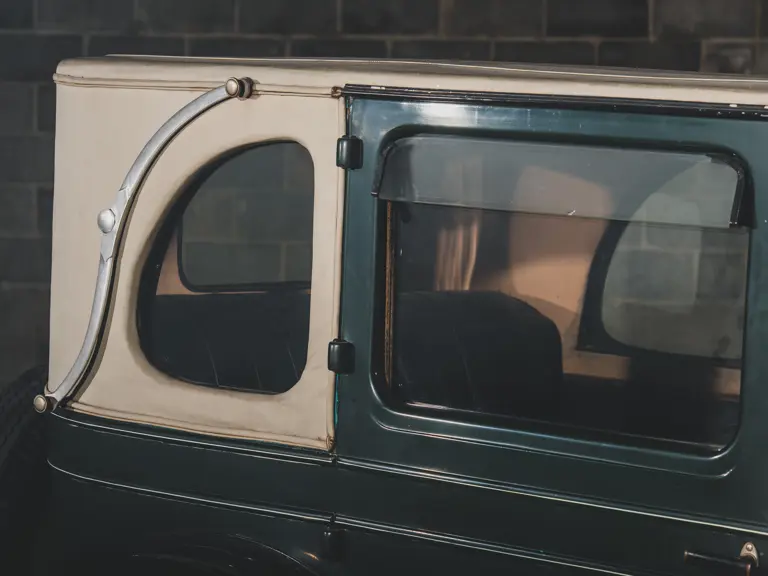
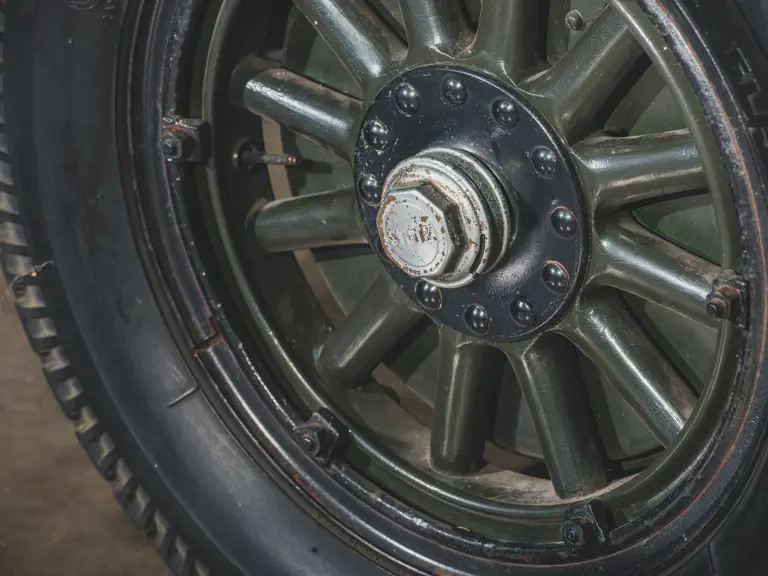
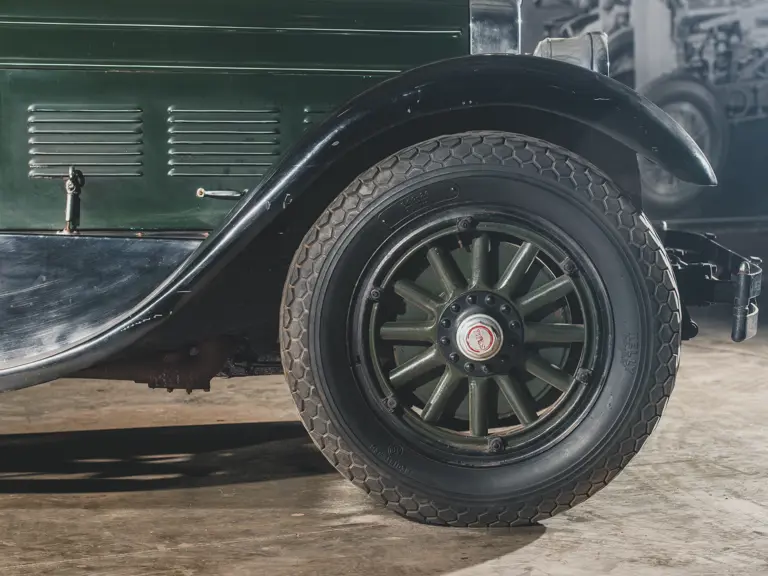
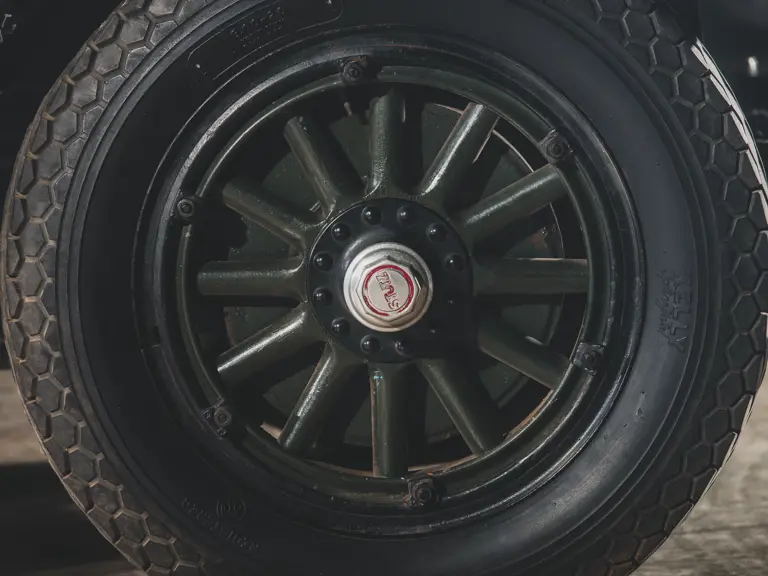

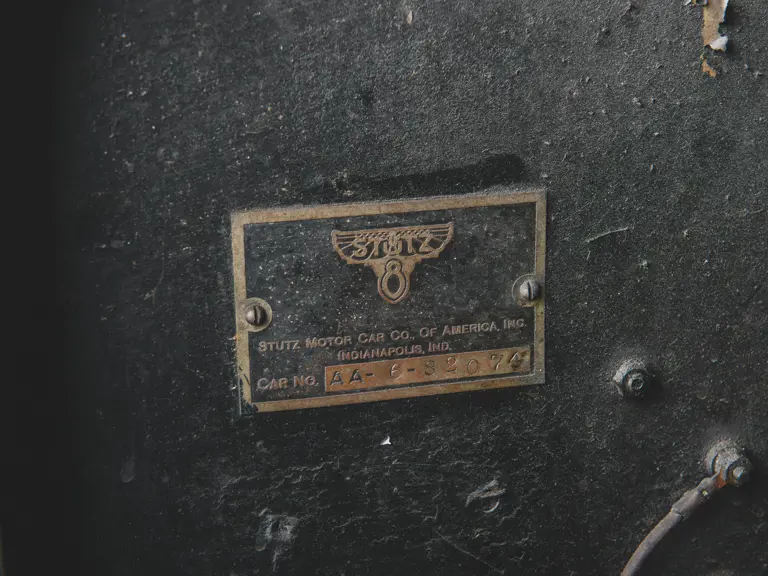
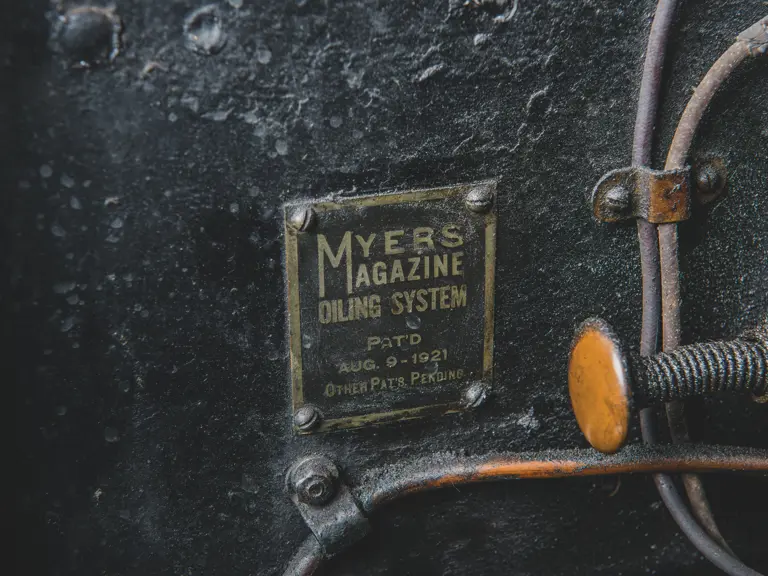
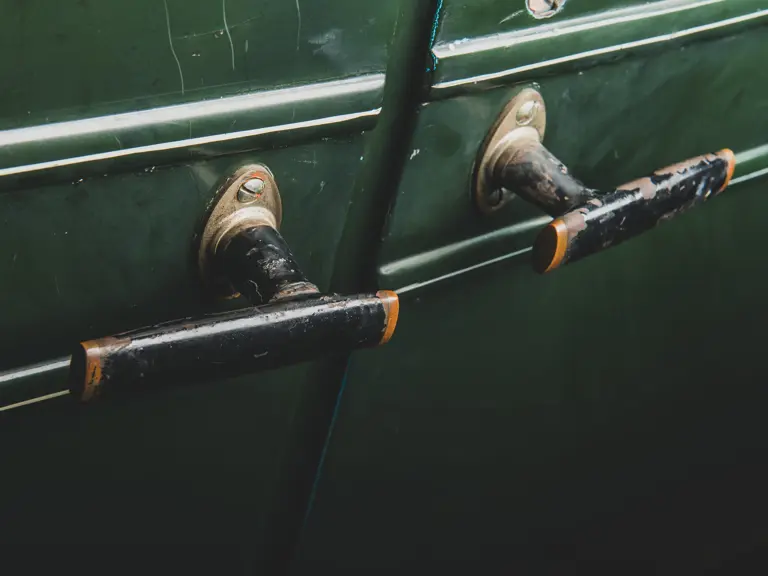
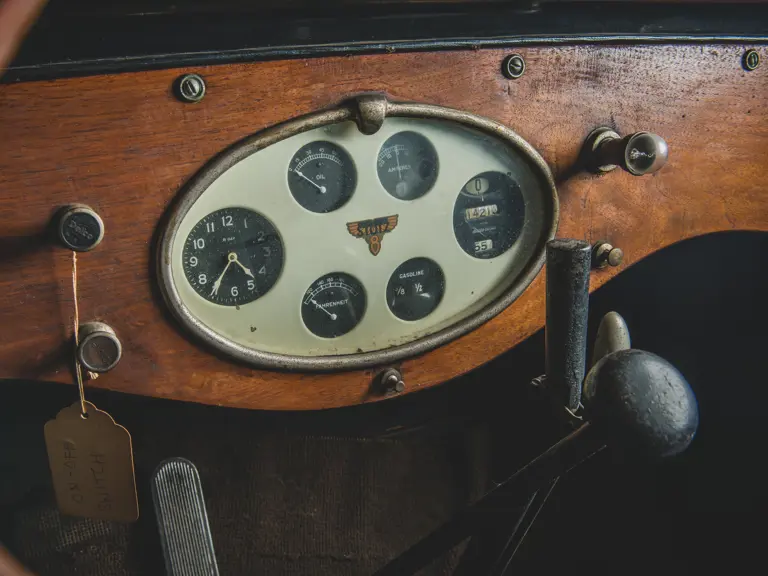

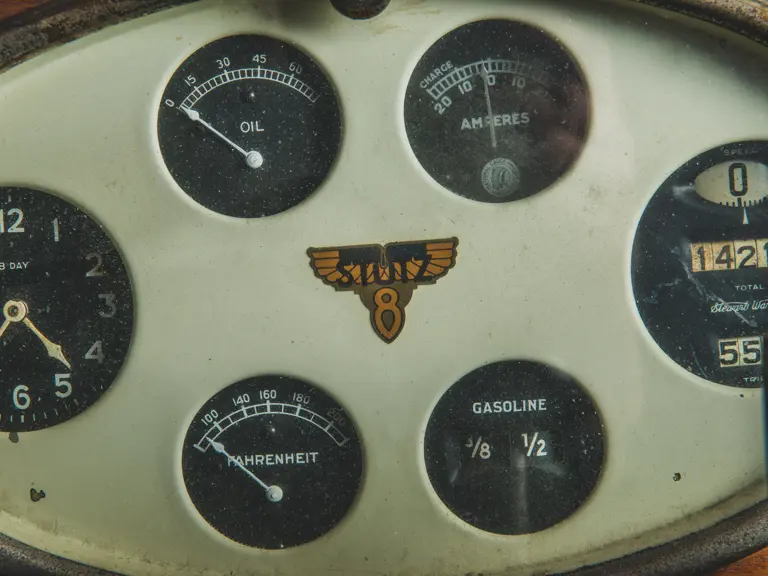

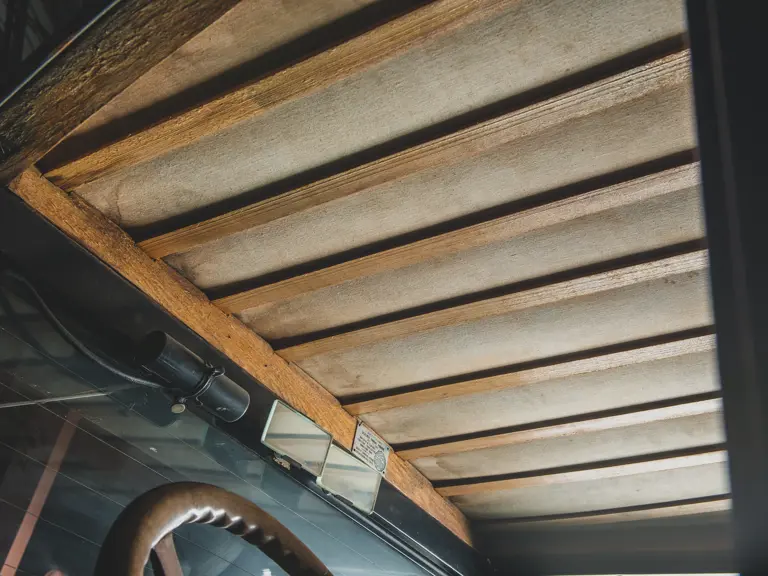
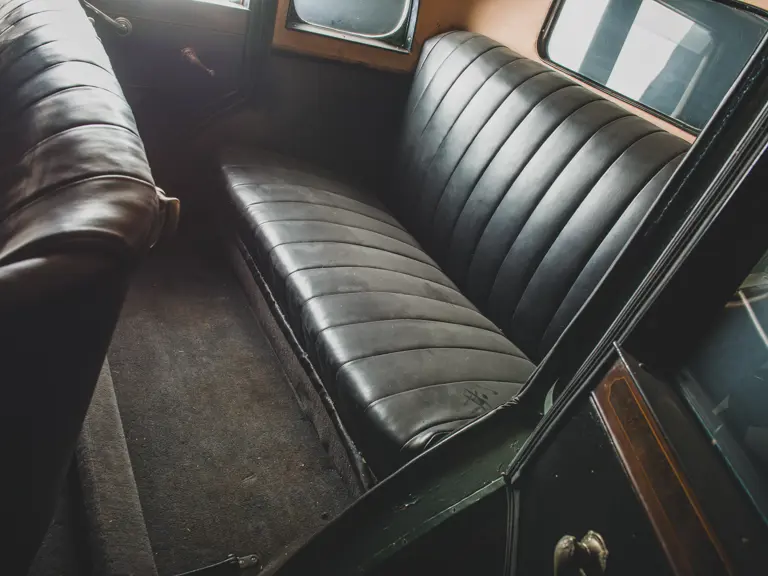

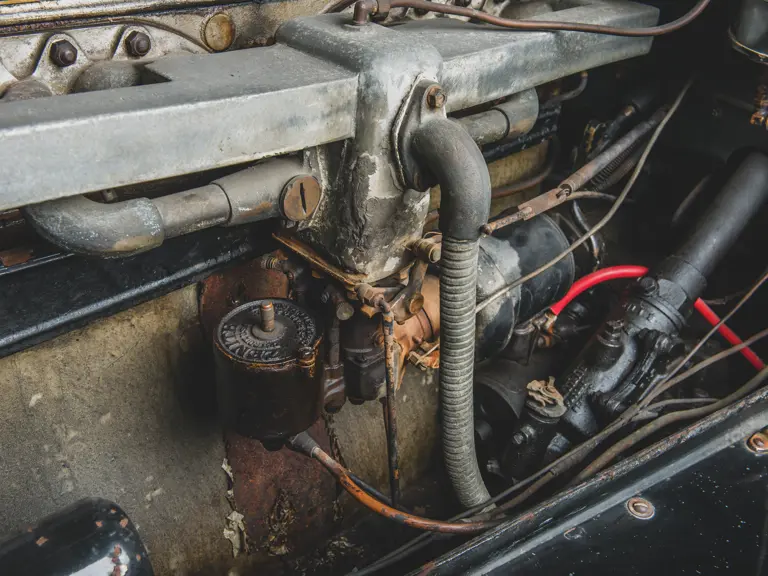
 | St. Louis, Missouri
| St. Louis, Missouri
